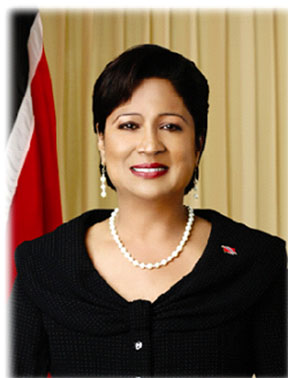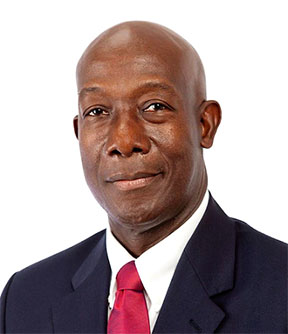It wasn’t that close. Indeed, five seats is a Goldilocks-zone majority. Any less, and governments get jumpy. Much more, and they get arrogant. As we found in 2007, and again in 2010.
Kamla promised team-based consensus, clean government and 1990s-style murder rates. She delivered none of these. She was punished. The partnership’s vote slithered from 60 per cent in 2010 to 47 per cent last Monday.
There are a few ways to calculate voter swing. For simplicity, I’m cutting out minor parties; I’m also neglecting boundary changes.
So: what was the swing between Part-nership and PNM, from 2010 to 2015?


Nationally, the PNM’s share of the big-party vote increased by 13 per cent. If that swing had been the same in every seat, the PNM would have picked up three more. Barataria-San Juan, Chaguanas East and Pointe-a-Pierre would have fallen to the red tide.
Kamla was lucky. Those seats swung by less than average—by just ten per cent, 7.5 per cent and eight per cent to the PNM.
For once, proportional representation would have made little difference. The Partnership took just under 47 per cent of the vote, and slightly more than 47 per cent of the seats. First-past-the-post gave the PNM no winner’s bonus.
The UNC did well in its heartlands. In 15 seats, the swing to the PNM was less than nine per cent. All were in central and southern Trinidad; and most were rural.
In Princes Town, the two-party swing was less than one per cent—and the raw number of UNC votes actually increased. Kamla herself suffered an adverse swing of less than four per cent in Siparia.
In the UNC heartland, last-minute switching of candidates may have done the party no harm. The swing to the PNM was below seven per cent in Gypsy’s former Mayaro seat.
The PNM’s huge swings were in Tobago—taking just the two main contenders, there was a red shift of more than a 46 per cent in both the island’s seats.
In Trinidad, the PNM also had a heartland bonus. There were six seats with a swing of 20 per cent or more. All were in the East-West corridor, from the new prime minister’s Diego Martin West to the regained bastion of Arima.
Of the nine marginals which changed hands in Trinidad, the six in the urban East-West corridor averaged a swing of close to 17 per cent. The other three swung by just under 11 per cent.
After five years of partnership government, the political split between the urban corridor and the rural South seems just a little sharper than in 2010.
And turnout? Overall numbers were slightly down—from 69 per cent in 2010 to 67 per cent on Monday. Lack of enthusiasm? Rain? Who knows—but the shift was not dramatic. Indeed, turnout was fractionally up on the 66 per cent scored in 2007.
Eight seats fell below 60 per cent turn-out. All were PNM, six of them around Port-of-Spain and two in Tobago.
Of the 16 seats with turnout over 70 per cent, 12 were held by the UNC.
Voters did bestir themselves in the hard-fought marginals of Tunapuna, St Joseph and Moruga/Tableland; all scored over 70 per cent.
Hamel-Smith gets a footnote. The 2,452 spoilt ballots were slightly fewer than in 2010, around 60 in most seats—but with a few dozen extra in seats such as Diego West where COP once did well. Overall, there were perhaps a couple hundred deli-berately spoilt ballots.
And the pollsters? Overall, the PNM lead was five per cent. Nigel Henry gave the partnership a three per cent lead on stated support—but he put the PNM a point ahead on his preferred “Who do you think will win?” method. Nacta was way out, with a partnership lead of four per cent.
In seat-by-seat polling, Louis Bertrand/ H.H.B. correctly called five for the PNM, albeit with tiny samples. Nationwide, he predicted 21-19; close enough.
Hamid Ghany’s Capsu polled in six seats, and gave five to the partnership; in the event, all went PNM. Nacta gave seven marginals to the partnership, of which the PNM in fact took three. It was Monday’s poll which mattered.
Reprinted from the Trinidad and Tobago Guardian online Sunday September 13, 2015
